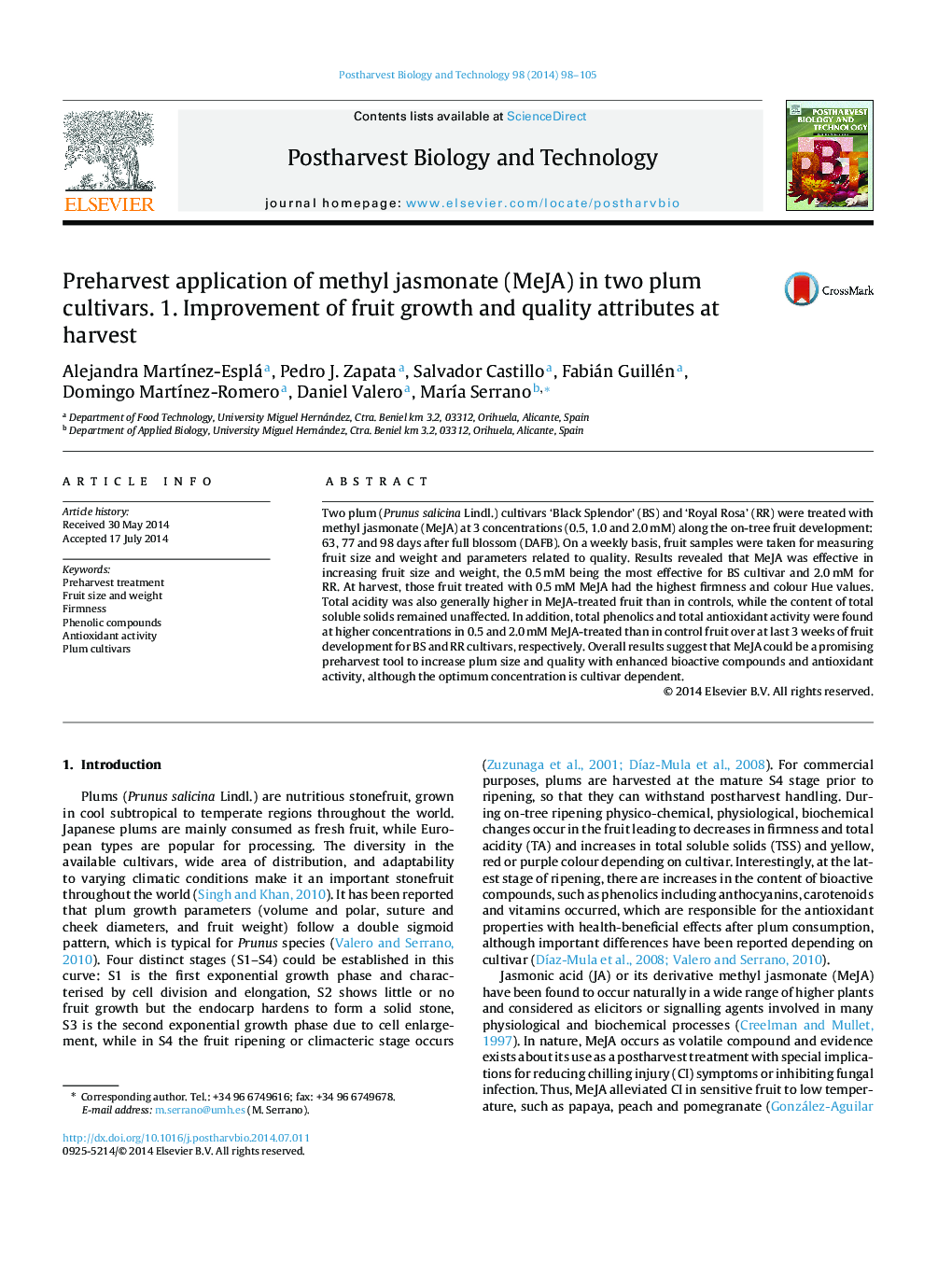| کد مقاله | کد نشریه | سال انتشار | مقاله انگلیسی | نسخه تمام متن |
|---|---|---|---|---|
| 4518246 | 1624996 | 2014 | 8 صفحه PDF | دانلود رایگان |

• Preharvest MeJA treatments were effective on increasing plum size and weight.
• At harvest plums treated with MeJA had higher firmness, acidity and colour Hue.
• The phenolic profile is reported for the first time in ‘Black Splendor’ and ‘Royal Rosa’ cultivars.
• Total phenolics and antioxidant activity were enhanced by preharvest MeJA treatment.
Two plum (Prunus salicina Lindl.) cultivars ‘Black Splendor’ (BS) and ‘Royal Rosa’ (RR) were treated with methyl jasmonate (MeJA) at 3 concentrations (0.5, 1.0 and 2.0 mM) along the on-tree fruit development: 63, 77 and 98 days after full blossom (DAFB). On a weekly basis, fruit samples were taken for measuring fruit size and weight and parameters related to quality. Results revealed that MeJA was effective in increasing fruit size and weight, the 0.5 mM being the most effective for BS cultivar and 2.0 mM for RR. At harvest, those fruit treated with 0.5 mM MeJA had the highest firmness and colour Hue values. Total acidity was also generally higher in MeJA-treated fruit than in controls, while the content of total soluble solids remained unaffected. In addition, total phenolics and total antioxidant activity were found at higher concentrations in 0.5 and 2.0 mM MeJA-treated than in control fruit over at last 3 weeks of fruit development for BS and RR cultivars, respectively. Overall results suggest that MeJA could be a promising preharvest tool to increase plum size and quality with enhanced bioactive compounds and antioxidant activity, although the optimum concentration is cultivar dependent.
Journal: Postharvest Biology and Technology - Volume 98, December 2014, Pages 98–105